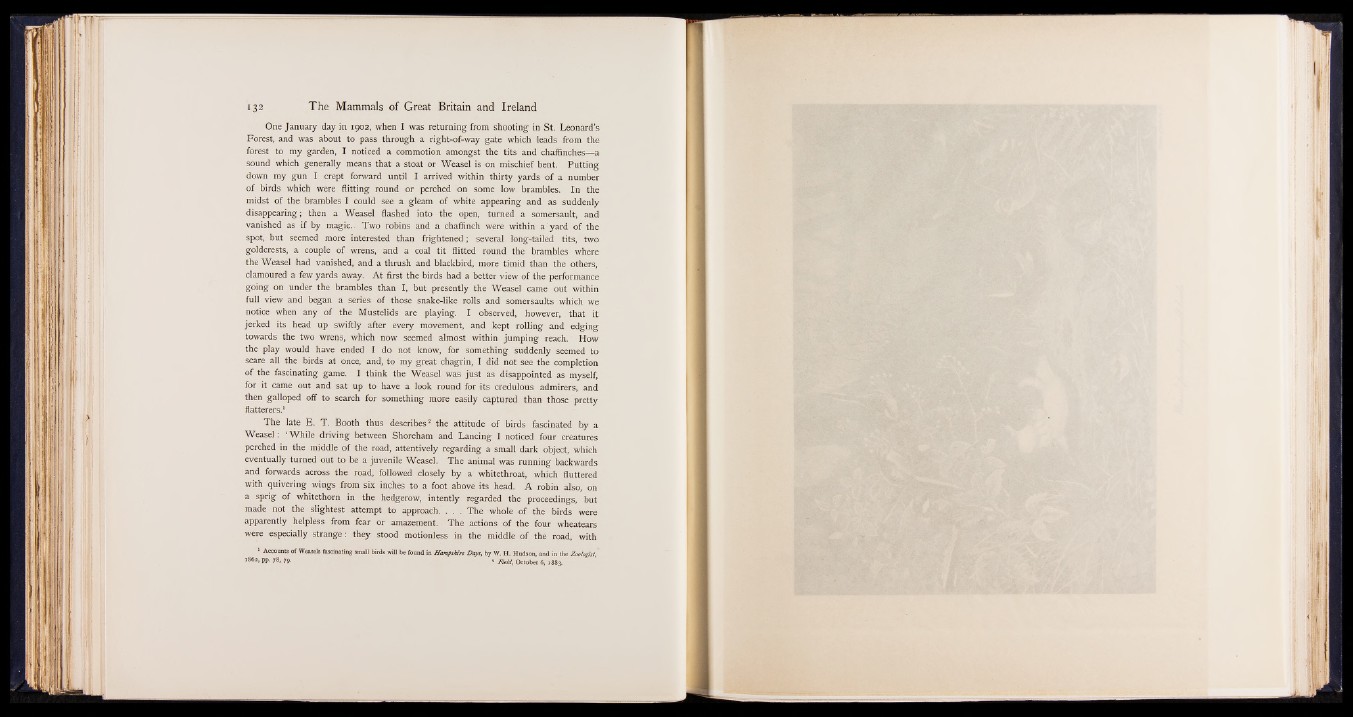
132 The Mammals of Great Britain and Ireland
One January day in 1902, when I was returning from shooting in St. Leonard’s
Forest, and was about to pass through a right-of-way gate which leads from the
forest to my garden, I noticed a commotion amongst the tits and chaffinches—a
sound which generally means that a stoat or Weasel is on mischief bent. Putting
down my gun I crept forward until I arrived within thirty yards of a number
of birds which were flitting round or perched on some low brambles. In the
midst of the brambles I could see a gleam of white appearing and as suddenly
disappearing; then a Weasel flashed into the open, turned a somersault, and
vanished as if by magic.. Two robins and a chaffinch were within a yard of the
spot, but seemed more interested than frightened; several long-tailed tits, two
goldcrests, a couple of wrens, and a coal tit flitted round the brambles where
the Weasel had vanished, and a thrush and blackbird, more timid than the others,
clamoured a few yards away. At first the birds had a better view of the performance
going on under the brambles than I, but presently the Weasel came out within
full view and began a series of those snake-like rolls and somersaults which we
notice when any of the Mustelids are playing. I observed, however, that it
jerked its head up swiftly after every movement, and kept rolling and edging
towards the two wrens, which now seemed almost within jumping reach. How
the play would have ended I do not know, for something suddenly seemed to
scare all the birds at once, and, to my great chagrin, I did not see the completion
of the fascinating game. I think the Weasel was just as disappointed as myself,
for it came out and sat up to have a look round for its credulous admirers, and
then galloped off to search for something more easily captured than those pretty
flatterers.1
The late E . T. Booth thus describes2 the attitude of birds fascinated by a
Weasel: ‘ While driving between Shoreham and Lancing I noticed four creatures
perched in the middle of the road, attentively regarding a small dark object, which
eventually turned out to be a juvenile Weasel. The animal was running backwards
and forwards across the road, followed closely by a whitethroat, which fluttered
with quivering wings from six inches to a foot above its head. A robin also, on
a sprig of whitethorn in the hedgerow, intently regarded the proceedings, but
made not the slightest attempt to approach. . . . The whole of the birds were
apparently helpless from fear or amazement. The actions of the four wheatears
were especially strange: they stood motionless in the middle of the road, with
1 Accounts of Weasels fascinating small birds will be found in Hampshire Days, by W. H. Hudson, and in the Zoologist,
l86*> PP- ?8> 79- * FUld, October 6, 1883.